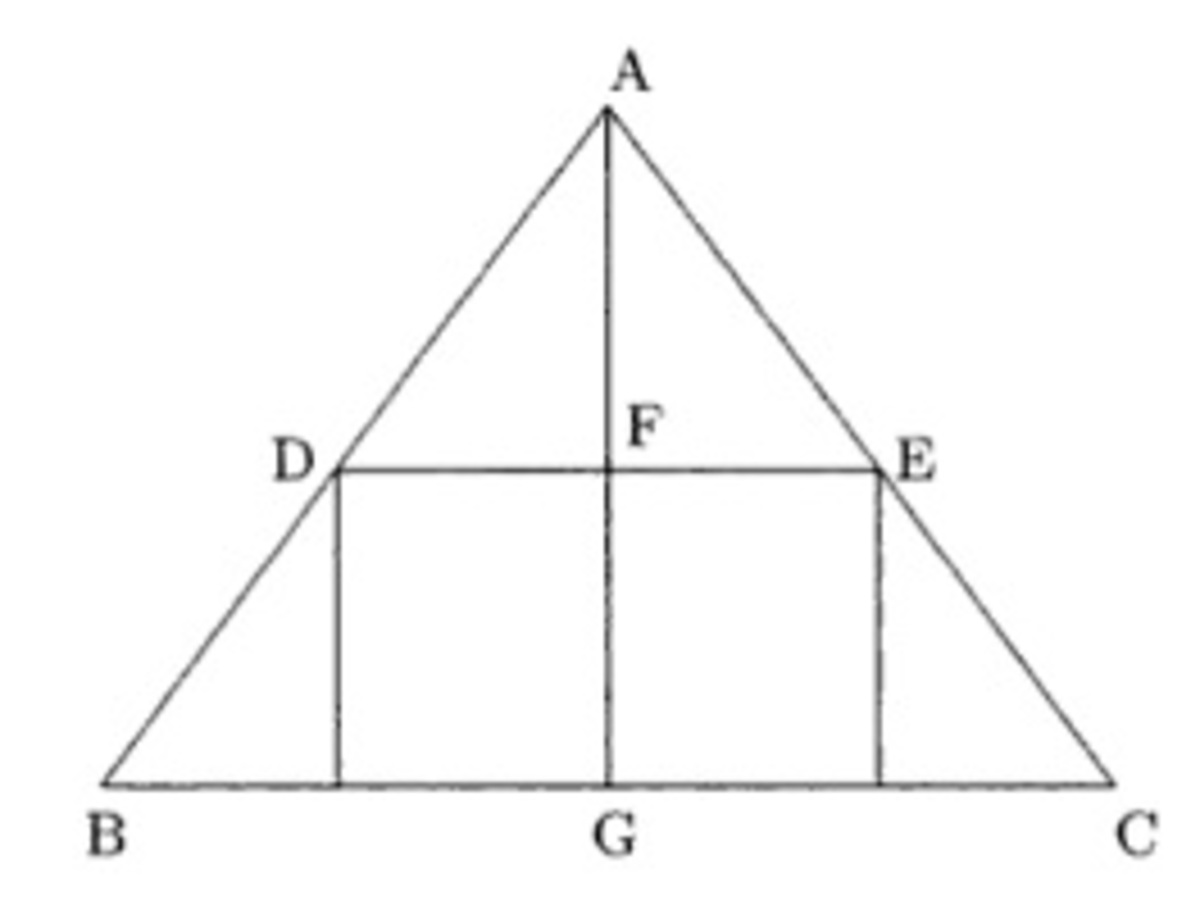Volume Ratio
The radius of a cone is 2 times the height of the cone.
A cube of maximum possible volume is cut from the same cone.
What is the ratio of the volume of the cone to the volume of the cube?
For your final step, use the approximation π = 3 . 1 4 .
Give your answer to 2 decimal places.
The answer is 7.07.
This section requires Javascript.
You are seeing this because something didn't load right. We suggest you, (a) try
refreshing the page, (b) enabling javascript if it is disabled on your browser and,
finally, (c)
loading the
non-javascript version of this page
. We're sorry about the hassle.
2 solutions
@Marta Reece How did you get CD=a/root2? Please explain!
Log in to reply
I have added that explanation to the solution. I hope this helps.

Consider a plane cross-section through a vertex of a cube and the axis of the cone as shown in the figure. Let s be the side length of the cube. Segment D E is a diagonal of the top of the cube. By applying Pythagorean Theorem, its length is s 2 . From the similar triangles A D E ~ A B C we have, B C D E = A G A F , or equivalently 2 r s 2 = h h − s . After simplifying, we get s = 3 2 h .
Now take the ratio of their volumes.
Solving for the volume of the cone
In the problem, it states that r = 2 h and p i = 3 . 1 4
V c o n e = 3 1 A b a s e h = 3 1 ( 3 . 1 4 ) ( 2 h ) 2 h = 3 1 ( 3 . 1 4 ) ( 2 ) 2 h 3 = 2 . 0 9 3 3 3 3 3 3 3 h 3
Solving for the volume of the cube
V c u b e = s 3 = ( 3 2 h ) 3 = 0 . 2 9 6 2 9 6 2 9 6 h 3
Taking the ratio of their volumes
r a t i o = 0 . 2 9 6 2 9 6 2 9 6 h 3 2 . 0 9 3 3 3 3 3 3 3 h 3 = 7 . 0 7
The cube will be largest when in contact with the cone. One of the top vertices of the cube, D , will be the length of the edge of the cube, a , off the ground and half the diagonal of the top face of the cube from the centerline E A . As we can see in the top view of the level of the top of the cube:
Triangles E C D and E A B are similar, so 1 2 = 1 − a 2 a .
Solving for a : a = 3 2 .
So the volume of the cube: V c u b e = 2 7 8 .
Volume of the cone: V c o n e = 3 π R 2 = 3 2 π .
The ration is then 4 9 π ≈ 7 . 0 6 5 .